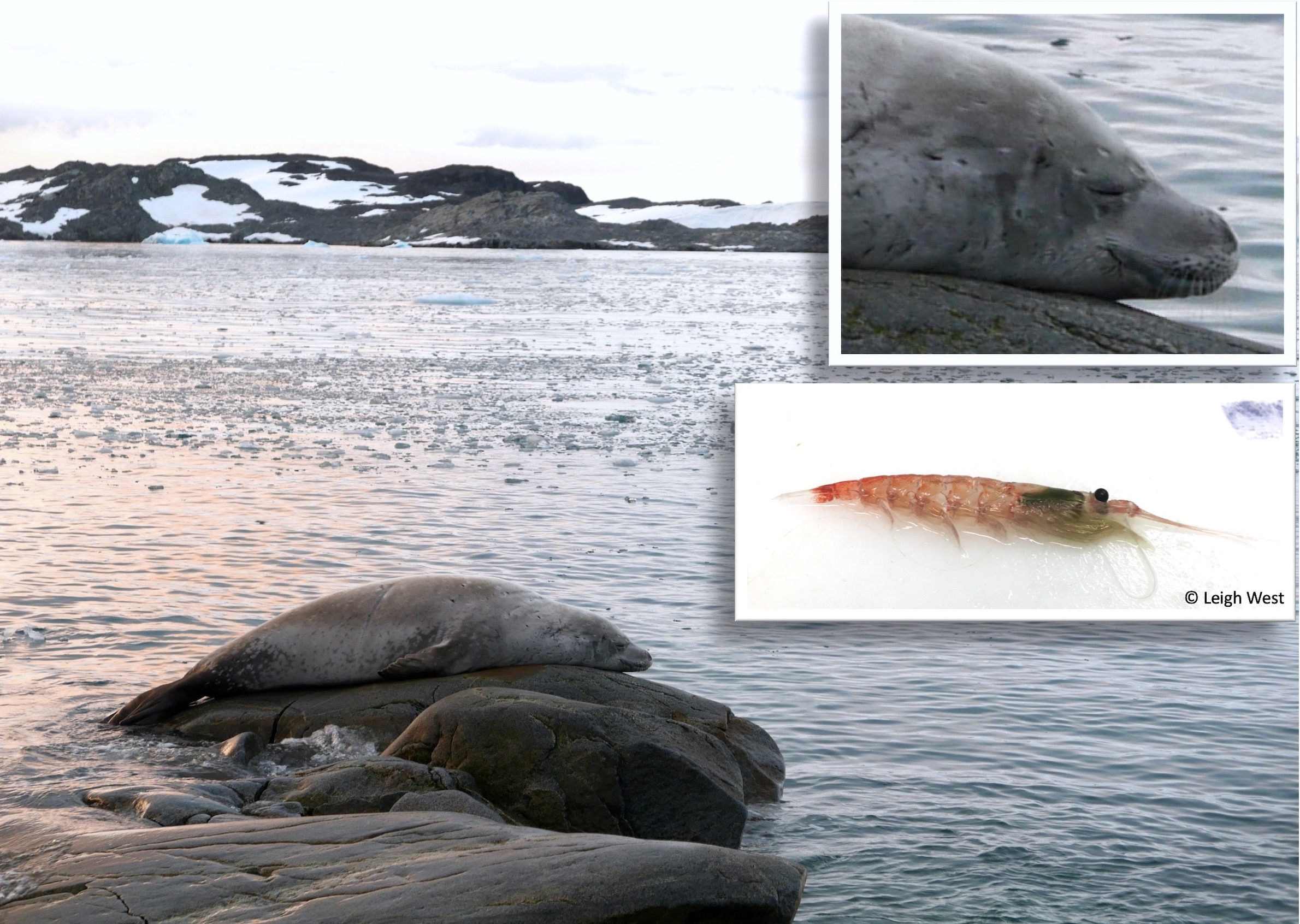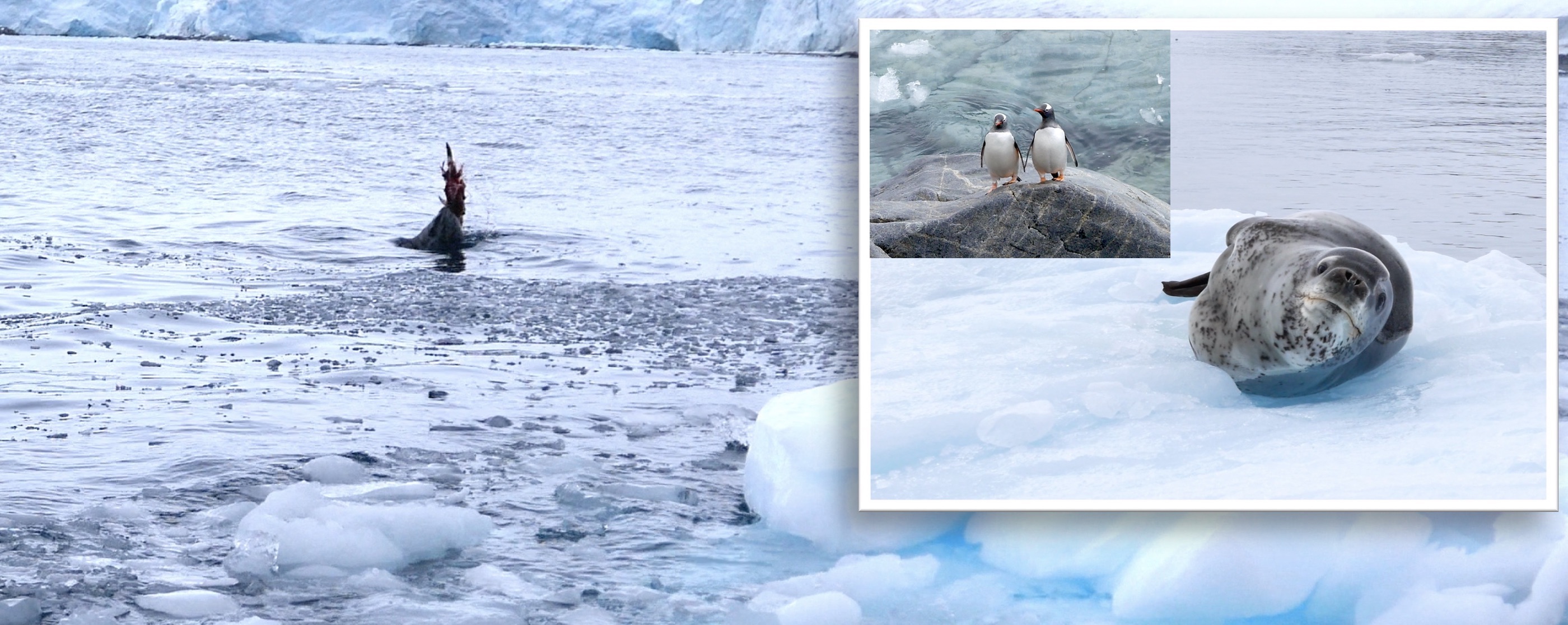Seals around Palmer Station - Part IV:
Today’s featured seals are of the Lobodontine tribe: the crabeater seal and the leopard seal. These two seal species share an interesting dental feature, their teeth are works of art!

Even though they share dental similarities, they eat very different things. Unlike what the name implies, crabeater seals do not eat crab. Rather, they eat crustaceans, the most important being krill (which look like shrimp, but are not; see photo below). Their teeth with their intricate, seemingly carved patterns are used as a sieve so that water can exit its mouth while trapping the krill inside.

The leopard seal is a top predator, with sinuous grace as it prowls the waters. Its head is quite distinct from the crabeater seals: the leopard seal has a far bigger head and snout (the crabeater’s snout is far more elegant). The leopard seal has no fear of other animals, except orcas (which are very uncommon). The leopard seal eats fish, squid, penguins, and seal pups. However, because of its teeth, it is also capable of eating krill like the crabeater seal. Below is an image I captured while a leopard seal was tossing a dead penguin.

Earlier I described other seals in the Palmer area: the Weddell seal, the Southern elephant seal, and the Antarctic fur seal. Irrespective of whether they belong to the true seal or eared seal, all seals are pinnipeds (pinna = “feather” and ped = “foot”, so feather-foot). Here, you can see several species of seals near each other (see Greg’s photo below: an Southern elephant, a Weddell and fur seals within a few meters from each other).
